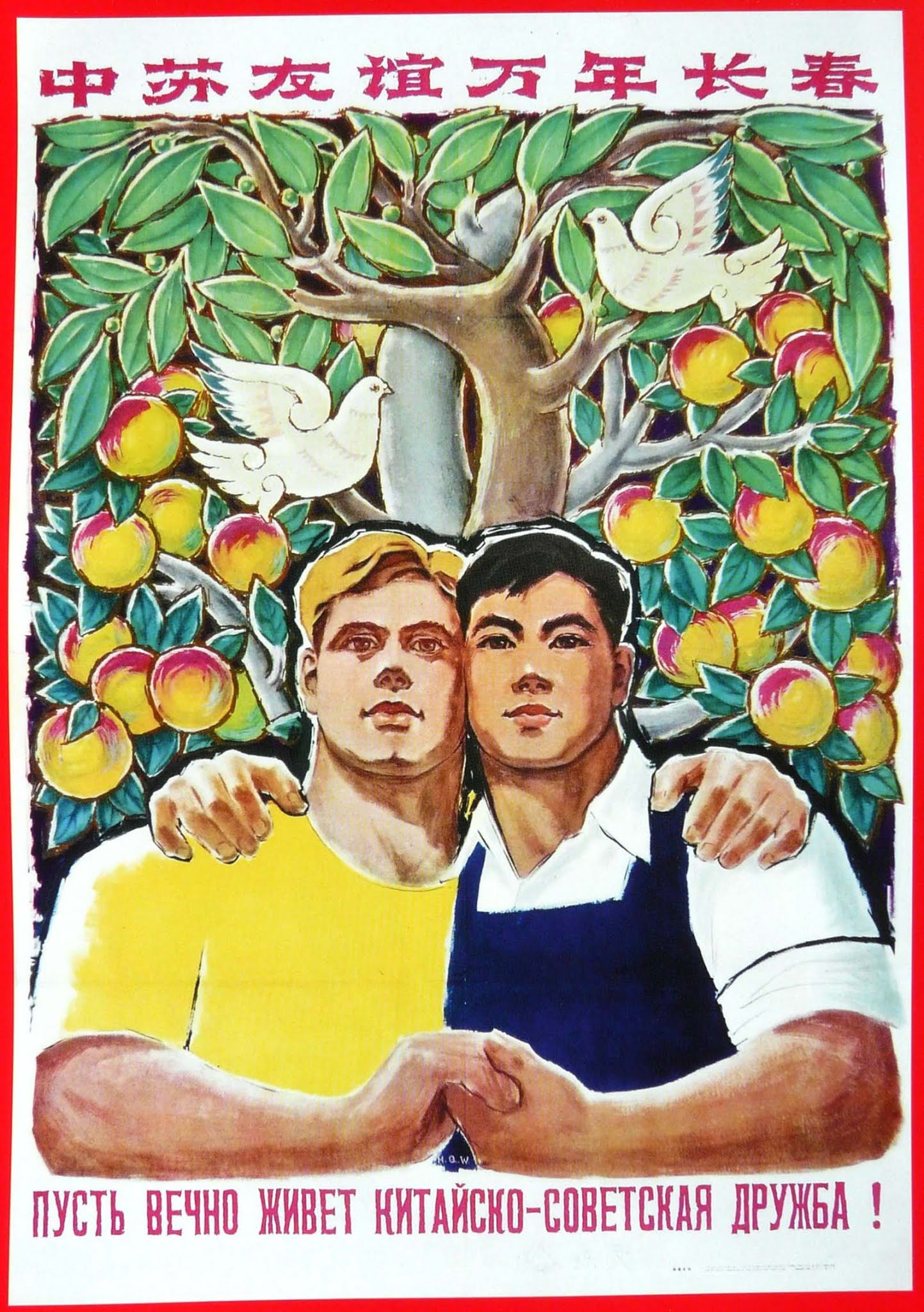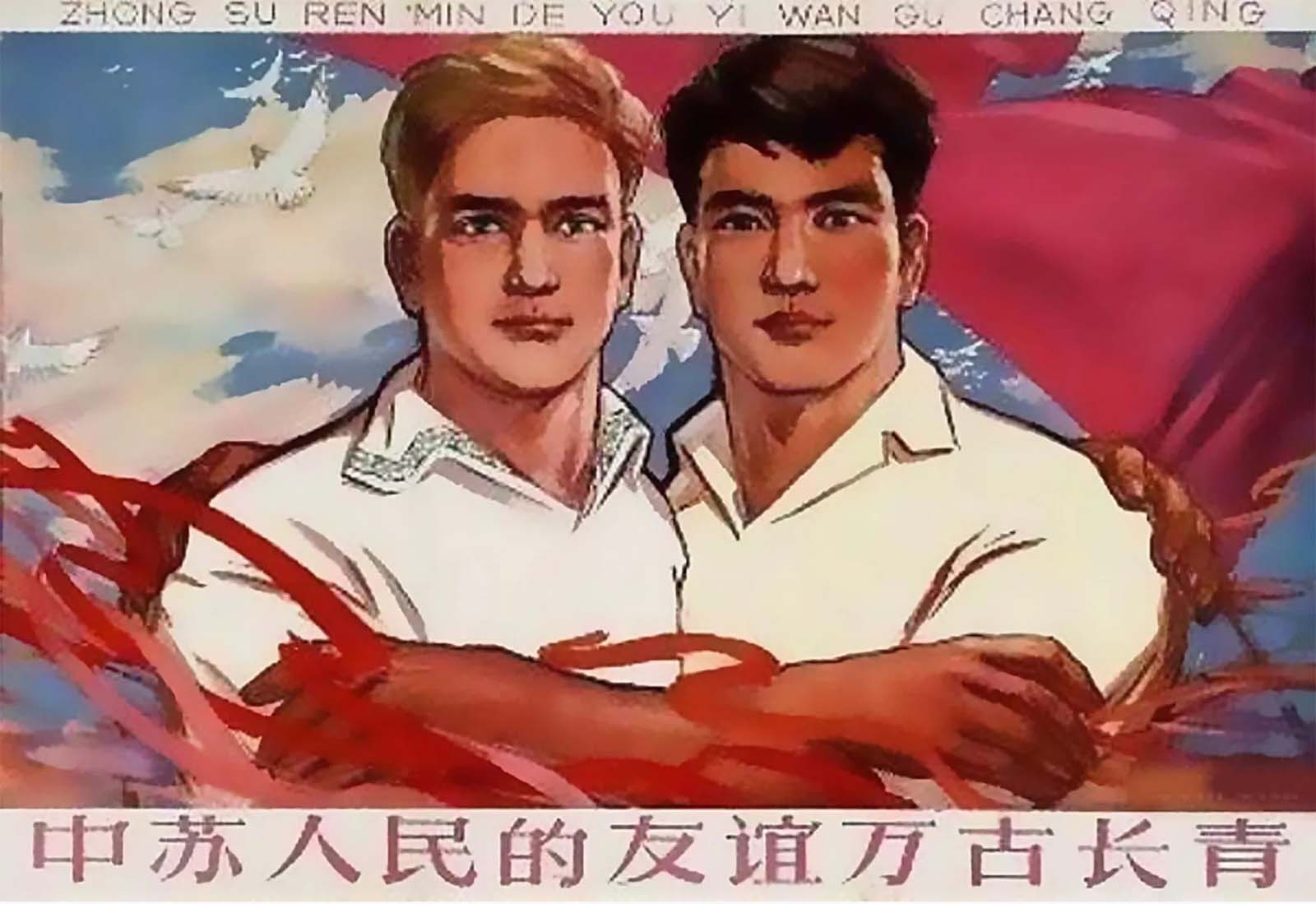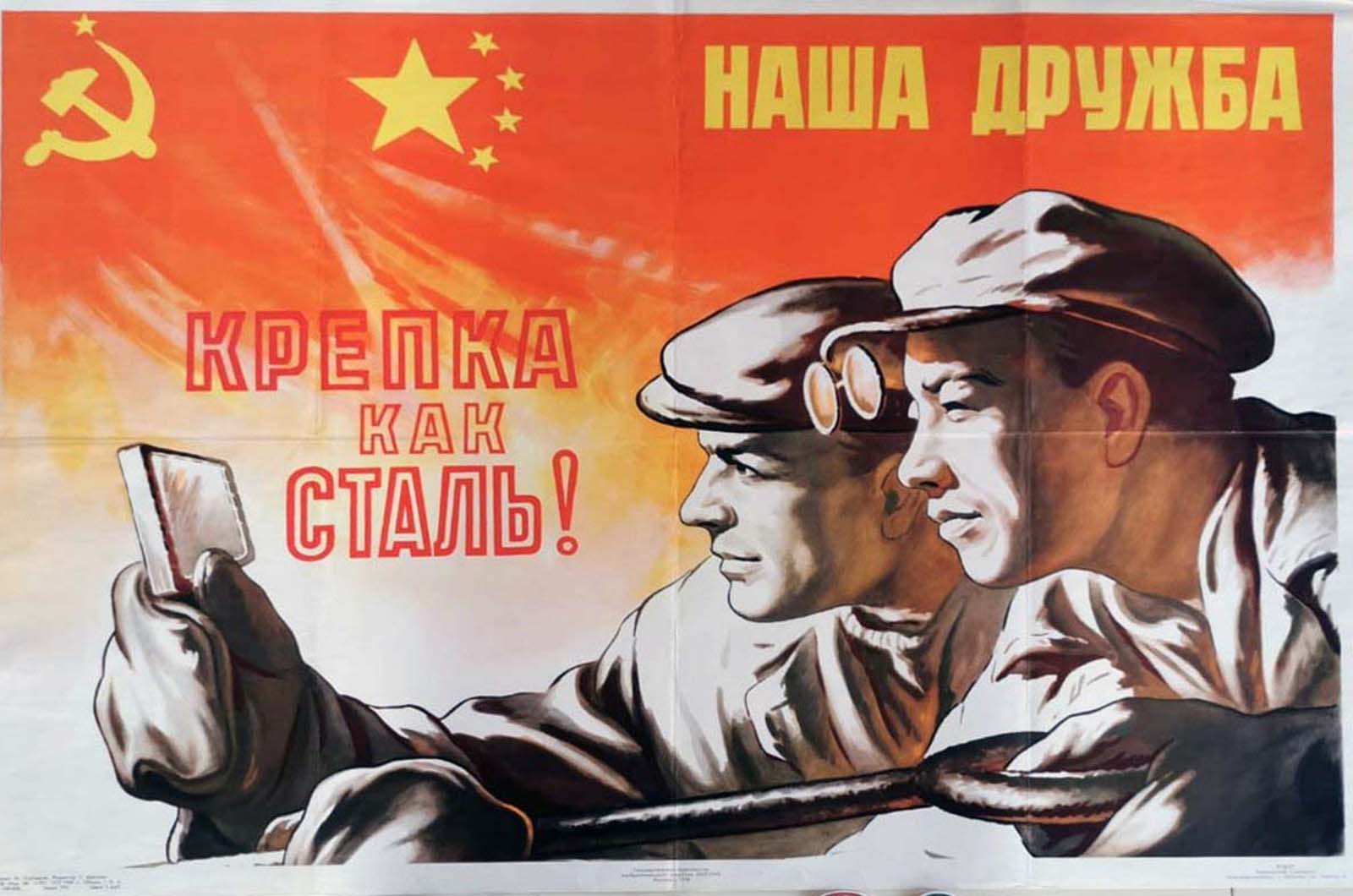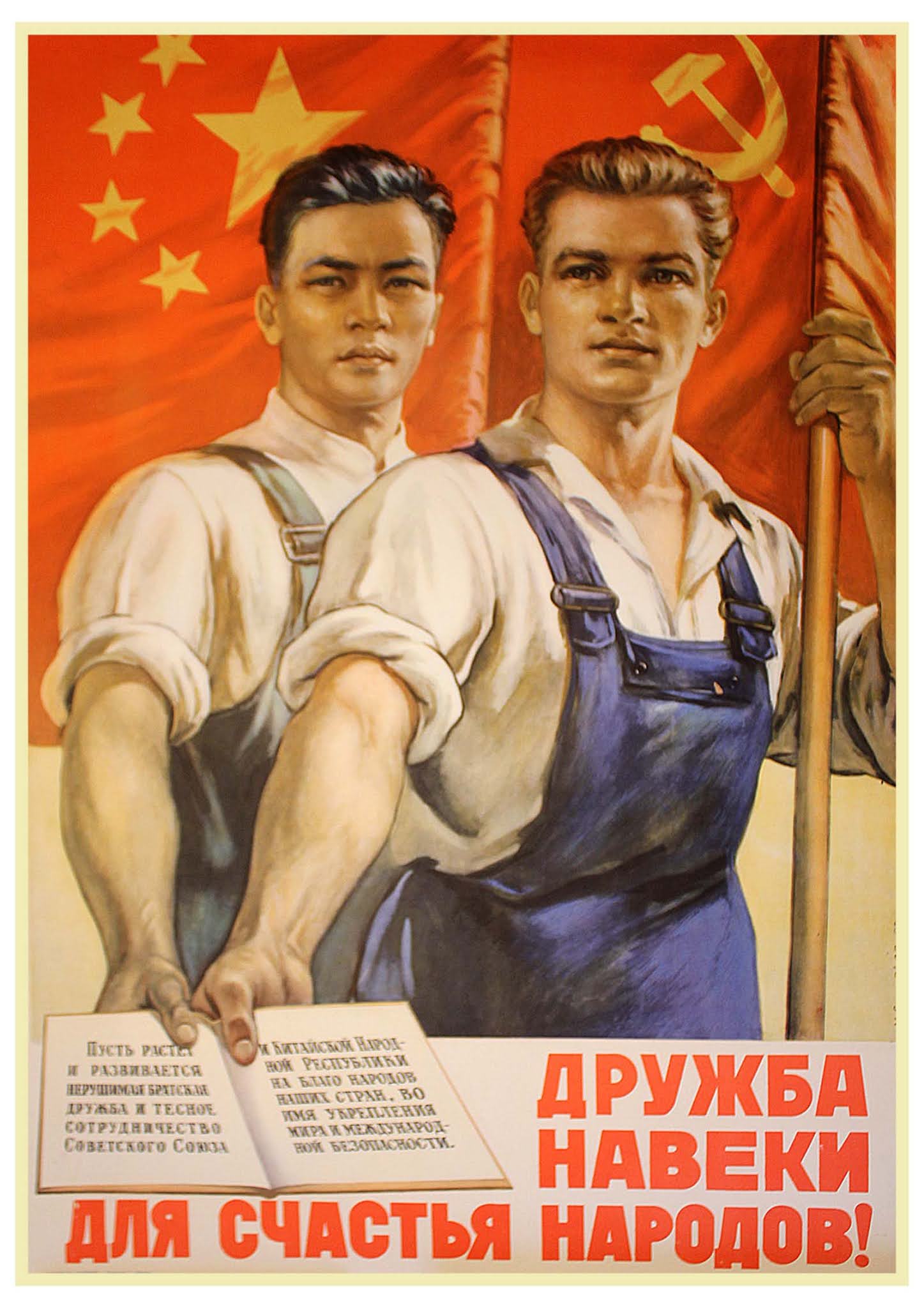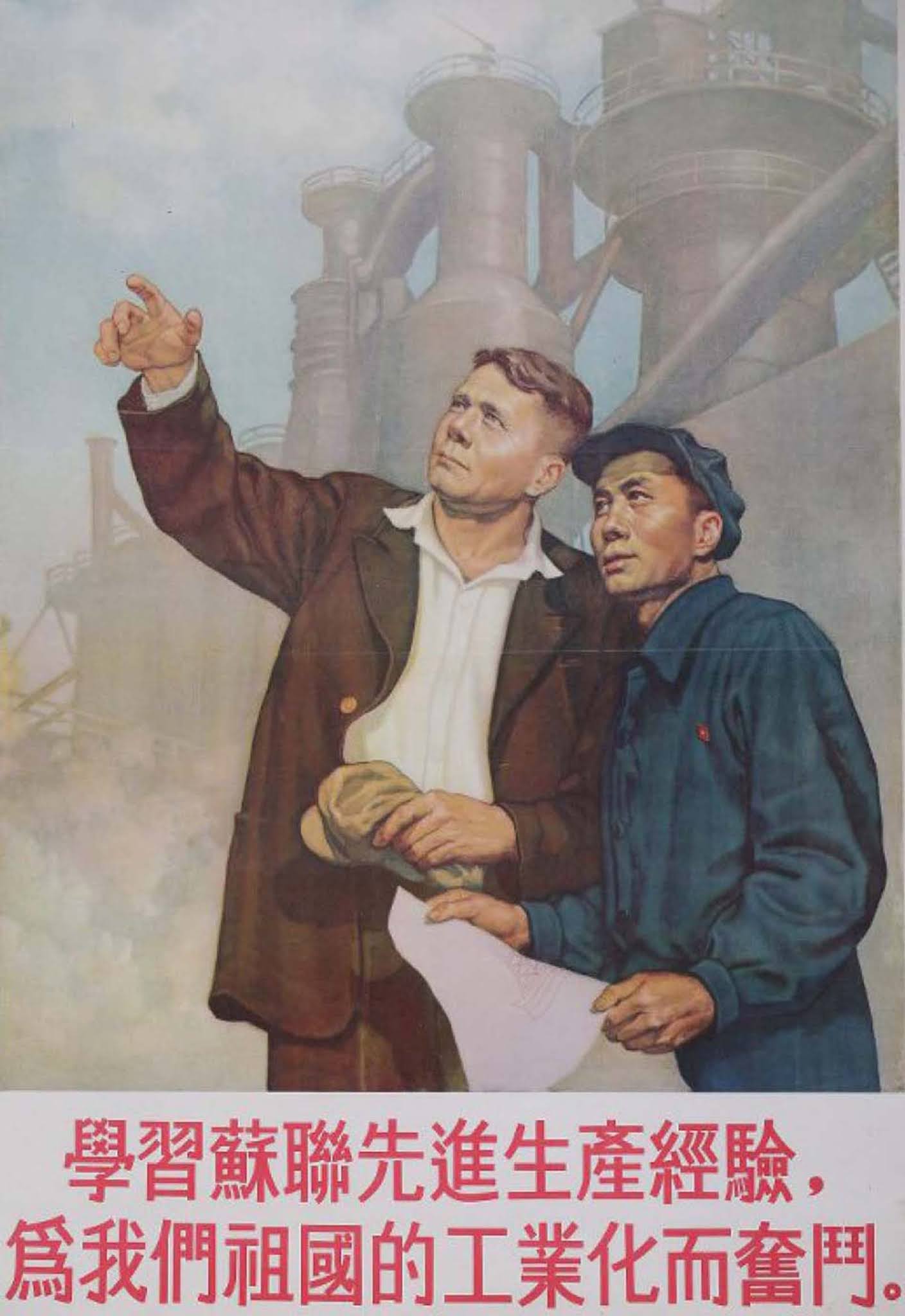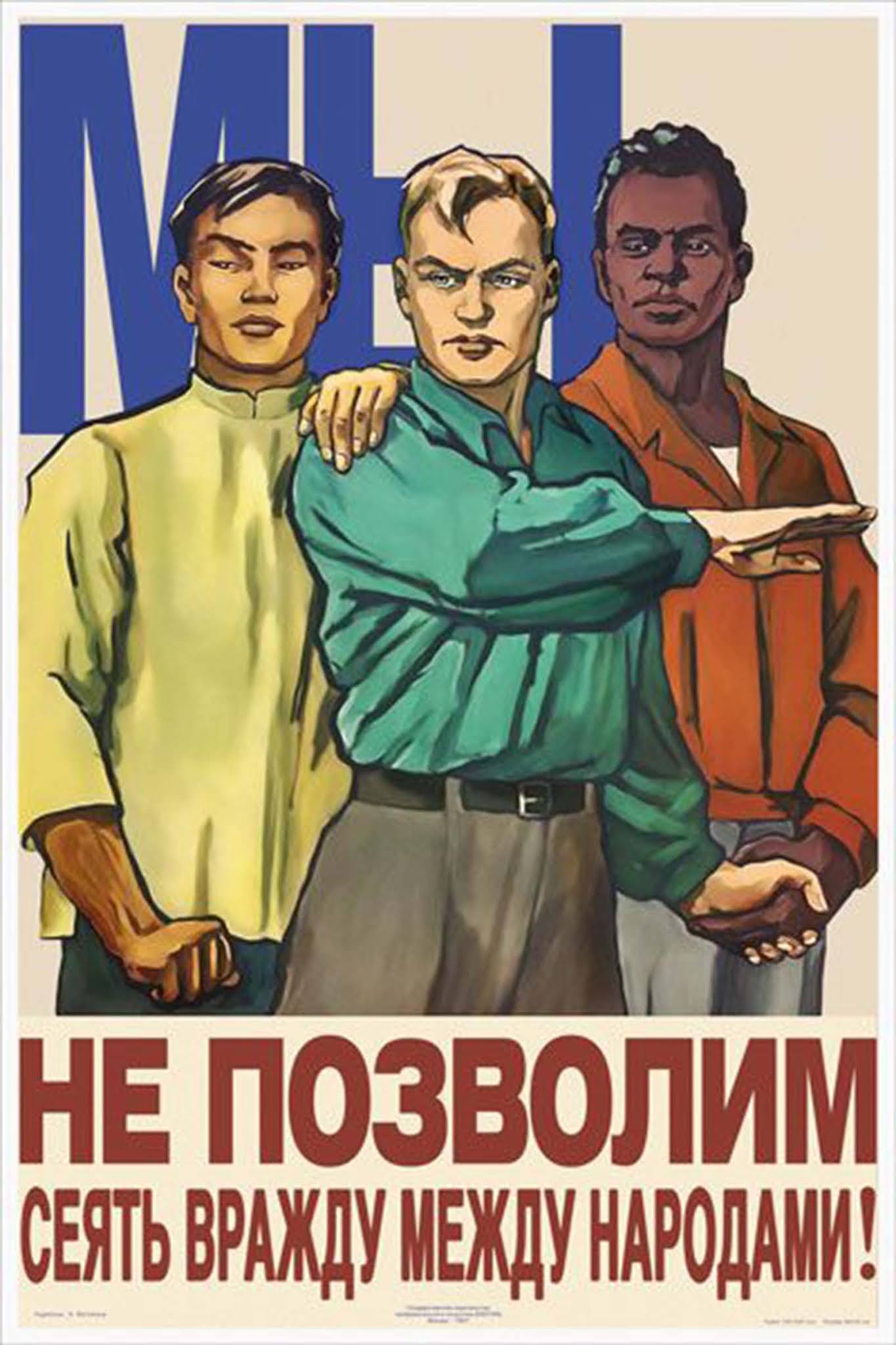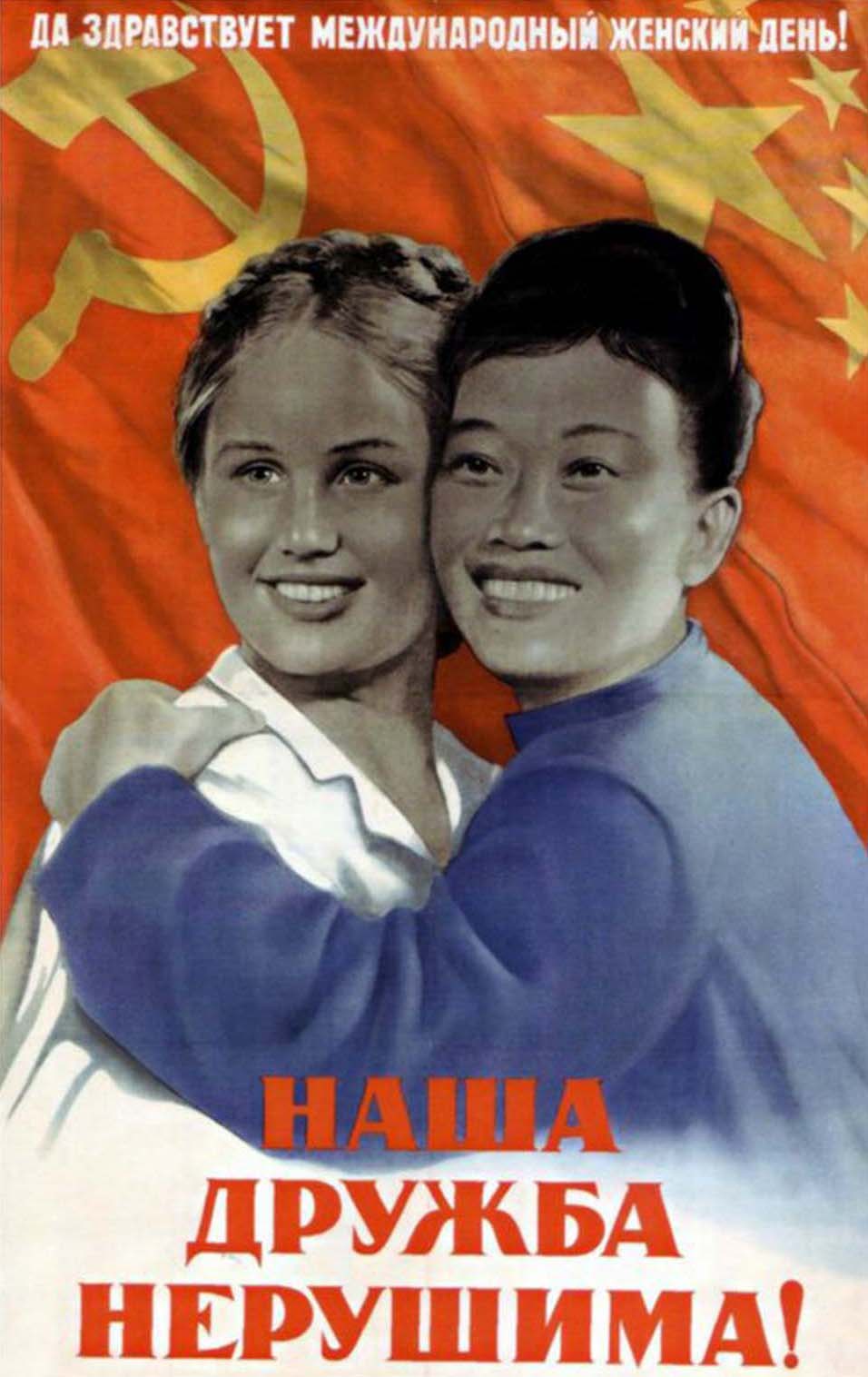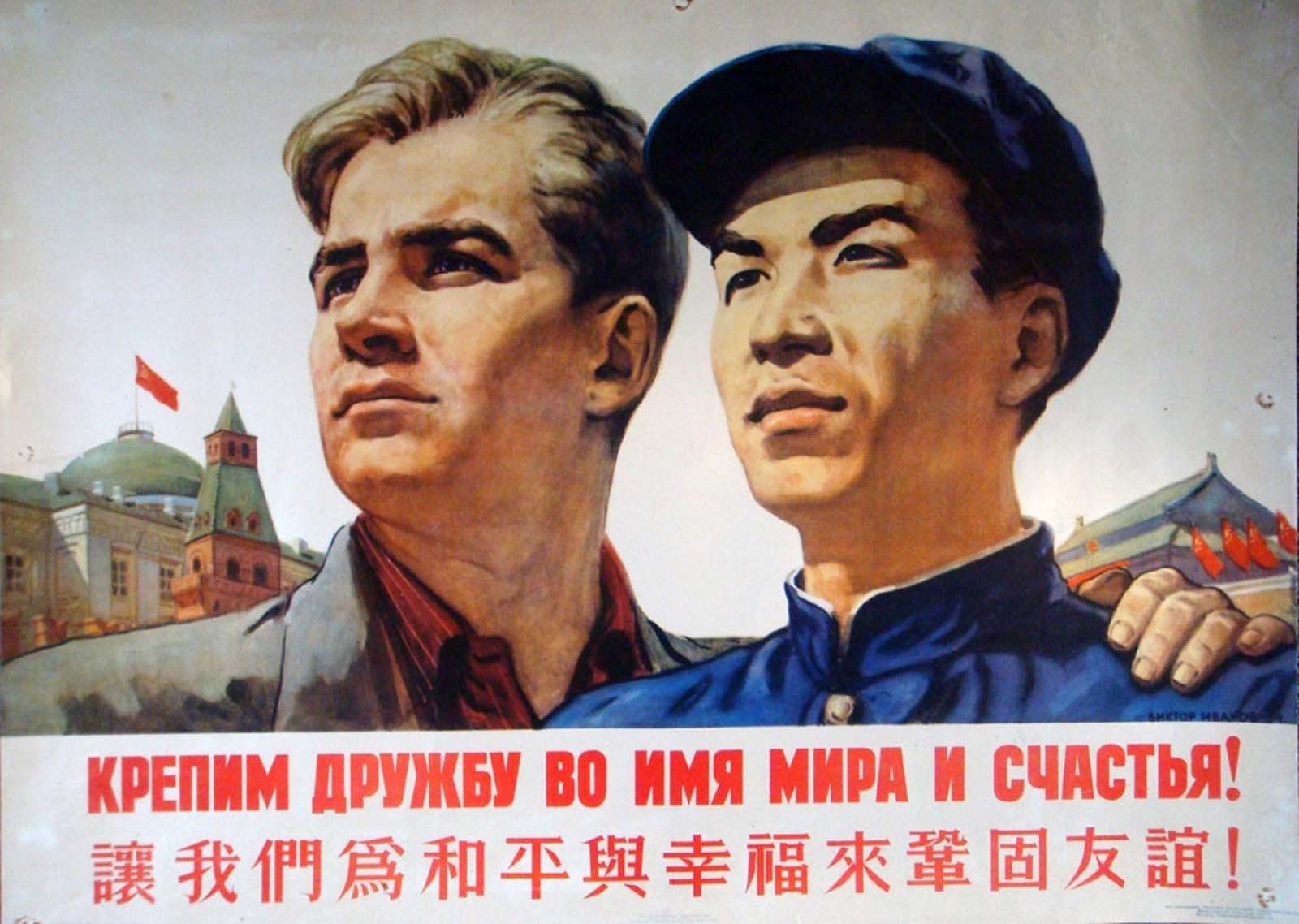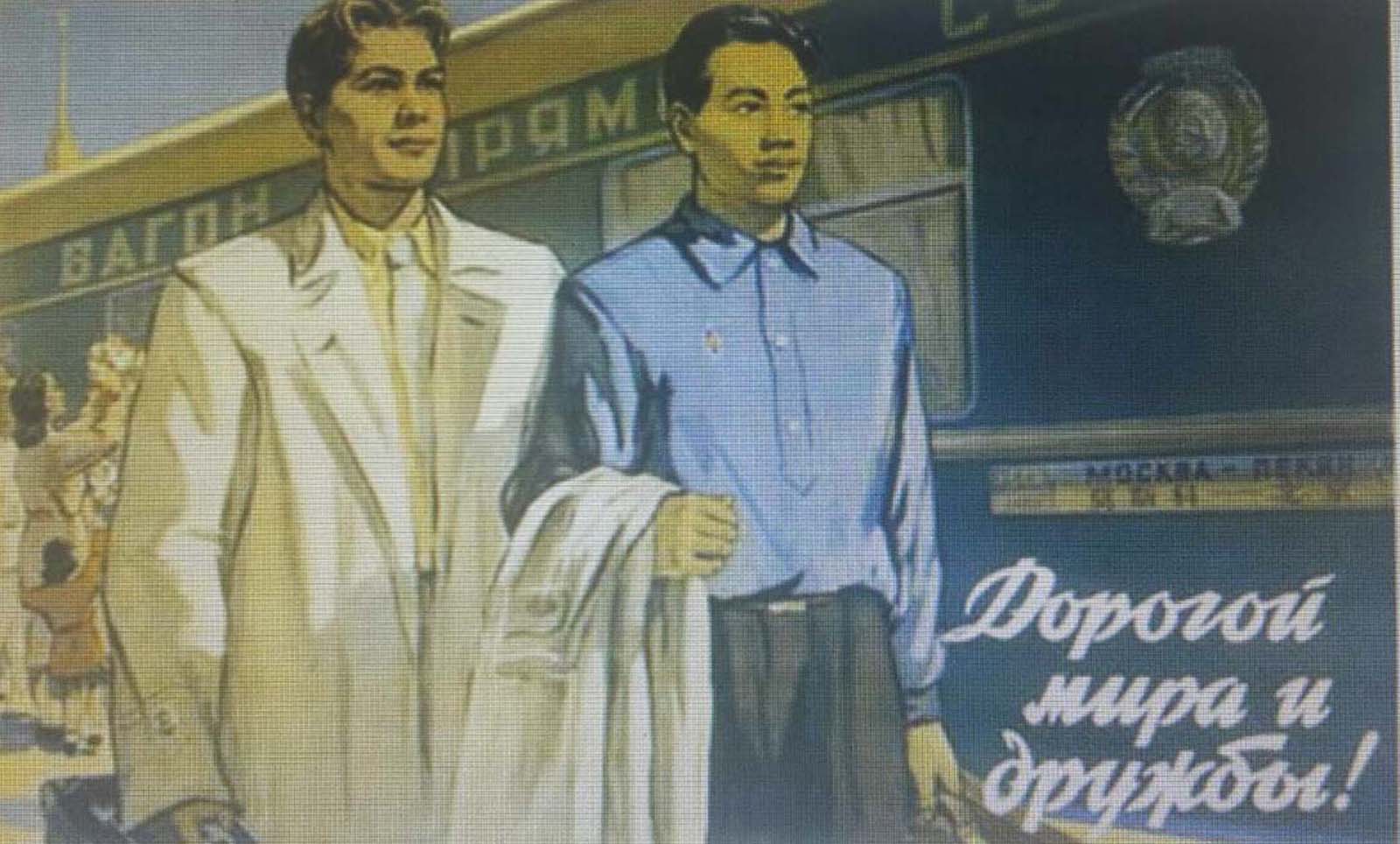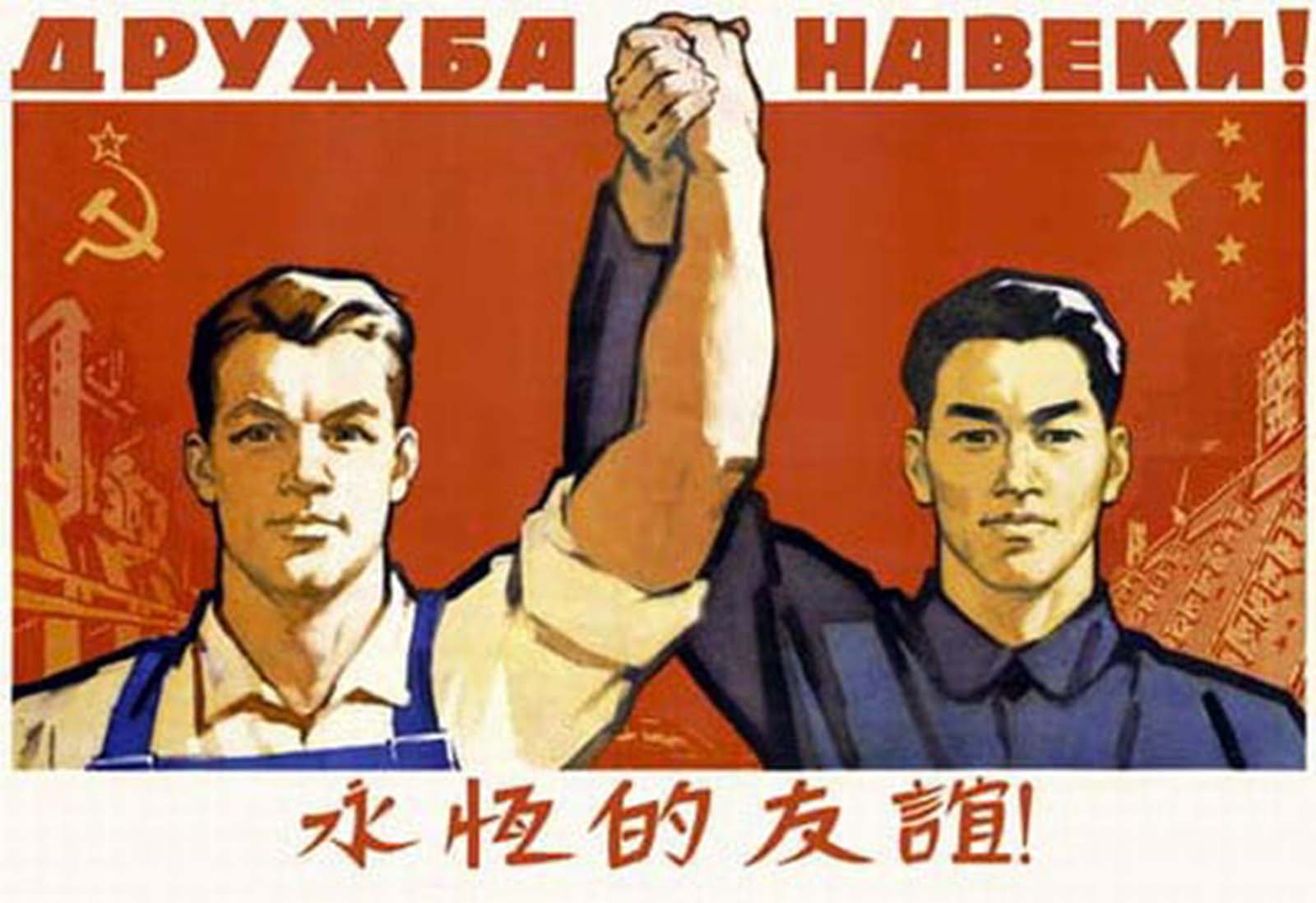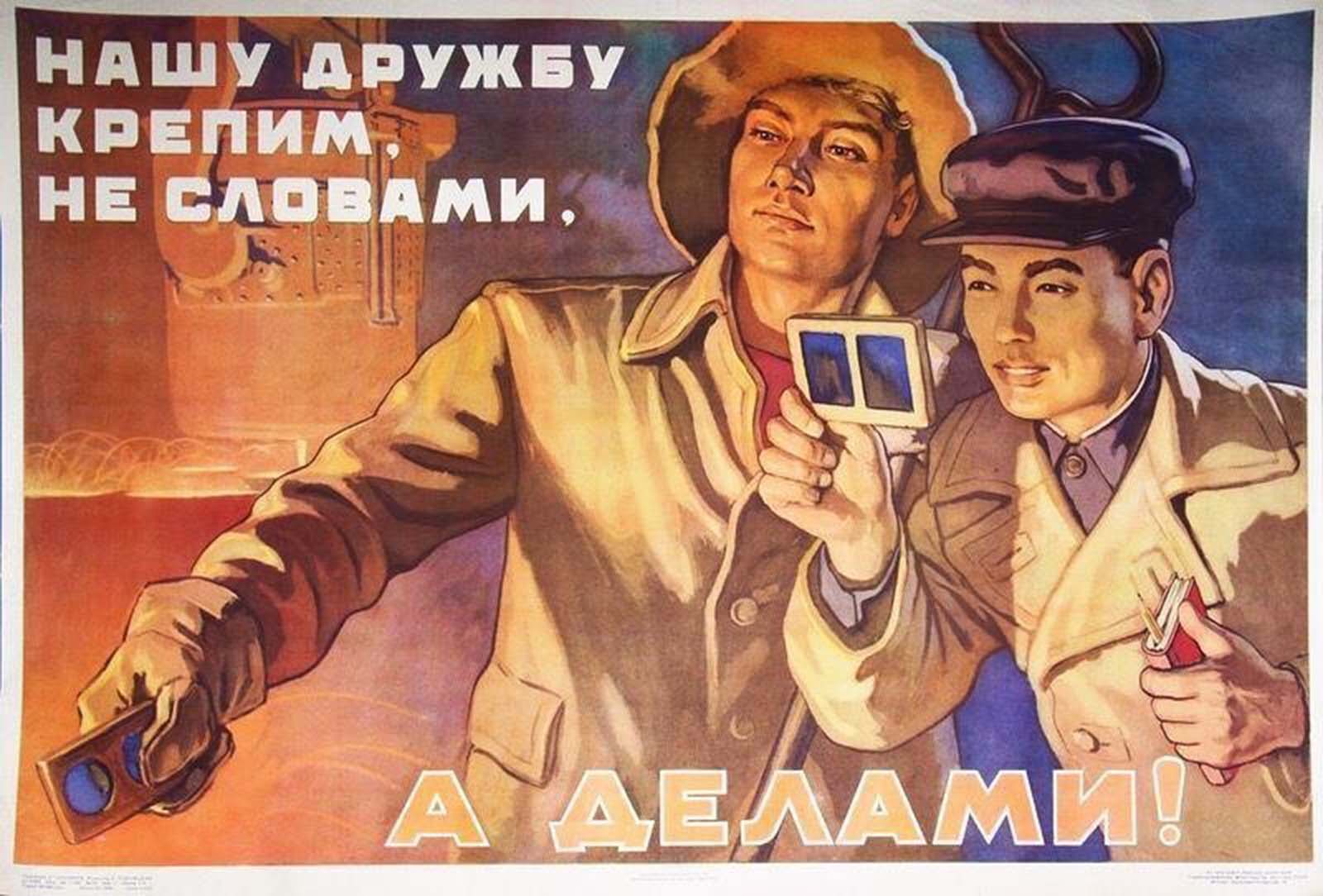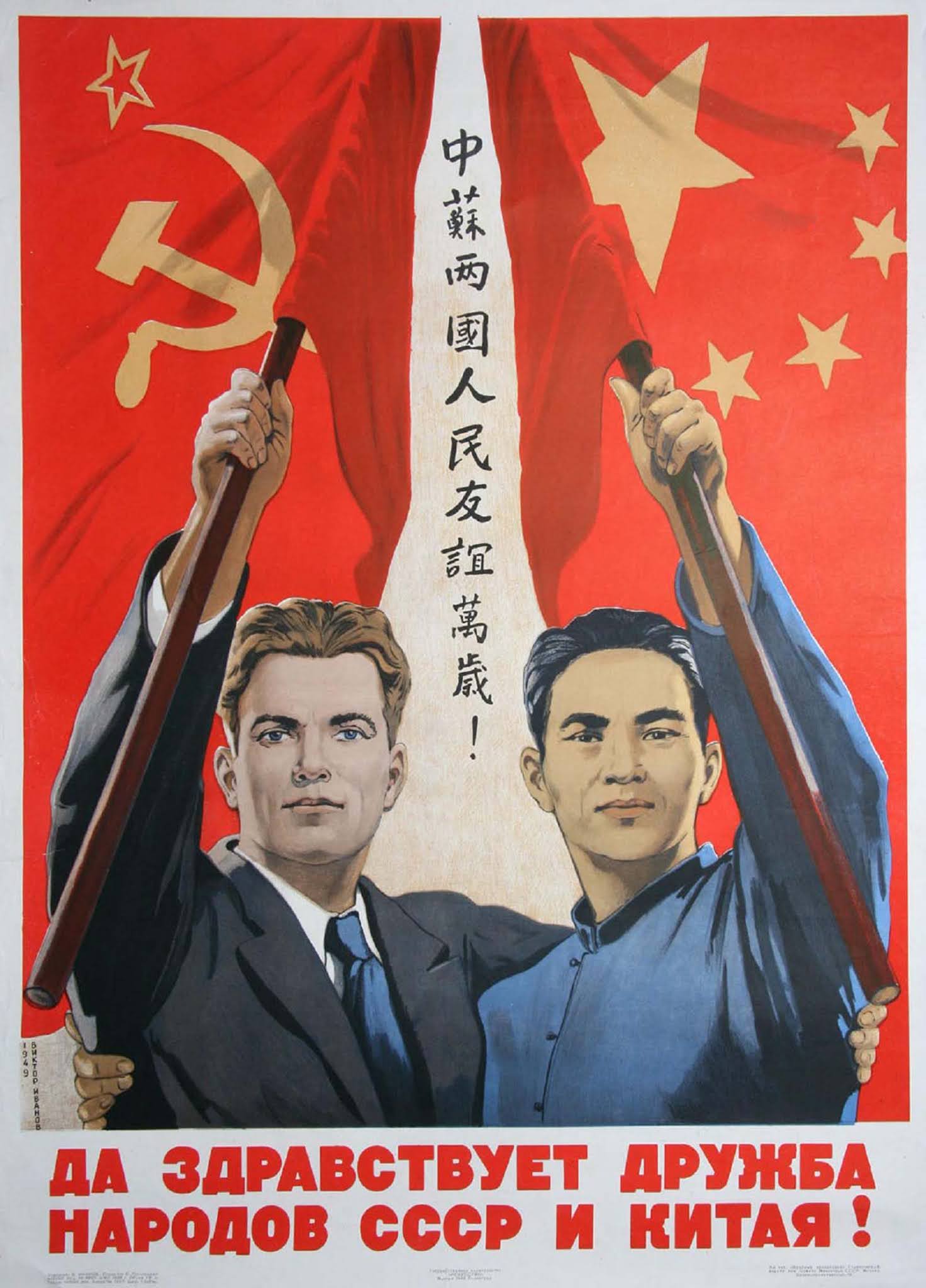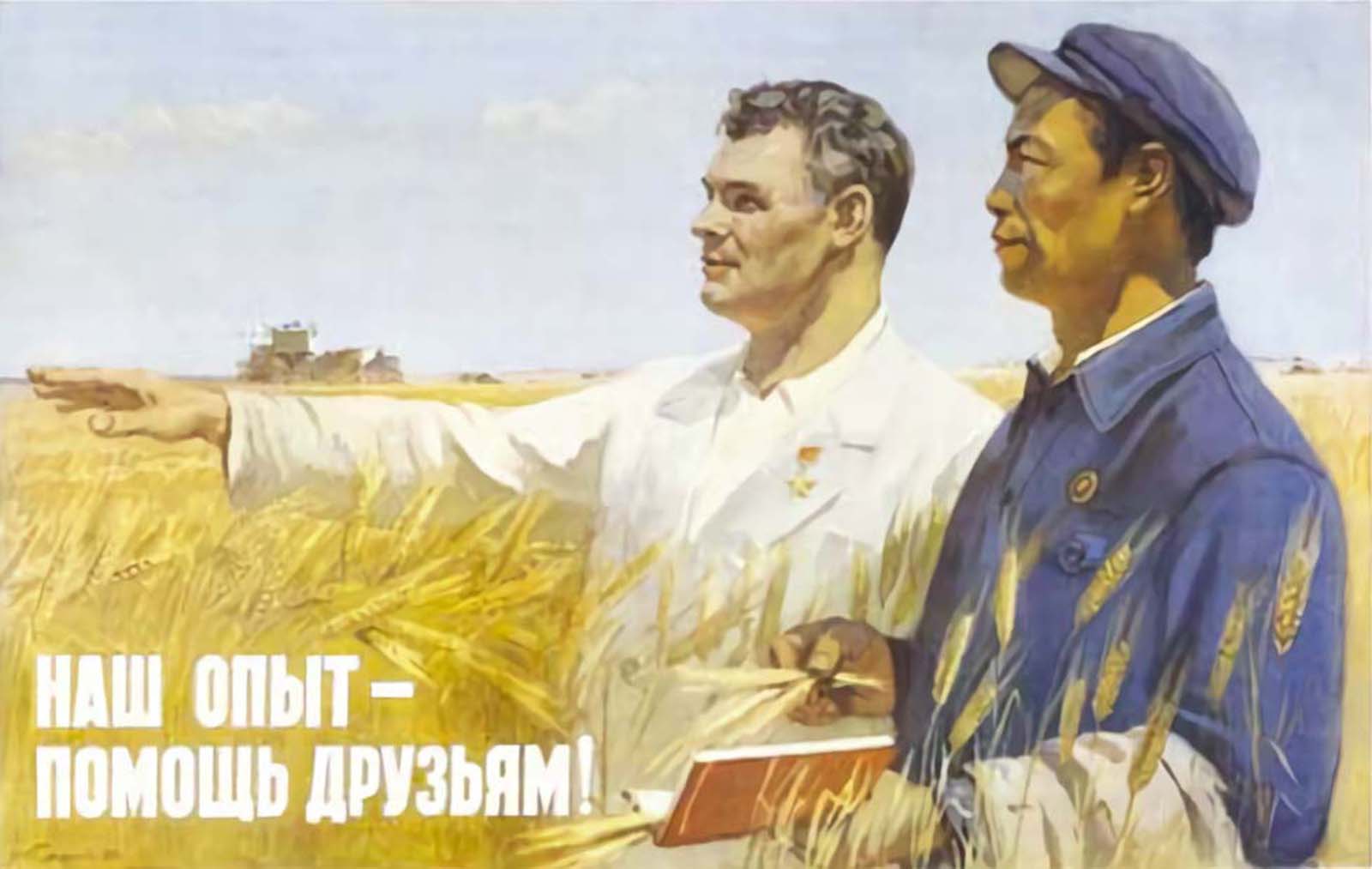Socialist regimes now held power across one-fifth of the globe, ruling a combined population of almost 800 million people. Maintaining a friendly and productive relationship between Moscow and Beijing was seen as crucial for the survival and advancement of socialism. In late 1949, Mao traveled to Moscow to meet Joseph Stalin for the first time. Recognizing the need for unity at a time of growing opposition, Stalin and Mao signed a bilateral treaty called the Treaty of Friendship, Alliance, and Mutual Assistance. Propaganda posters were an integral part of attesting to the world the close relationship between China and the Soviet Union and as seen from this photographic collection they walk hand-in-hand, kissing, clutching each other, all happy and gay, so to speak. These homoerotic Chinese-Soviet communist propaganda posters look more like a gay couple’s vacation pics, or maybe an ad for interracial gay marriage. The designers of these posters didn’t realize how homoerotic they were and later on, many scholars have pointed out the overt homoeroticism present in these images. The depictions range from sweet—two men offering each other flowers— to totally inappropriate such as men representing China and the Soviet Union kissing, holding hands, passionately embracing each other, etc. Scholars think that there is little evidence that the artists intentionally portrayed homosexuality in these images. Most likely the artists were tunnel-visioned on convincing people within the Soviet Union and China that cooperation and closeness were essential to survival and strengthening global socialism. According to Angelina Lippert of Poster House, the concept of fraternity, especially between countries fighting the pre-established system of capitalism, often drove these intimate portraits, adding that when Stalin came to power, the only acceptable style of art became Socialist Realism. Much of this public-facing design was meant to celebrate hearty, robust workers, rosy-cheeked and clearly enjoying themselves. Moreover, the socialist fraternal kiss was very common back then, and even today if you go to certain countries, men still kiss on the mouth, and that’s not considered a sign of homosexuality. These images would have represented two countries coming together to share a love of Communism and raising their children to be communists. China and the Soviet Union were both rather homophobic societies. Communist leaders and intellectuals took many different positions on LGBT rights issues. Karl Marx and Friedrich Engels said very little on the subject in their published works. Marx in particular commented rarely on sexuality in general. The Bolsheviks, who came to power during the October Revolution of 1917, had decriminalized male homosexuality already in 1922. Then, Joseph Stalin recriminalized male homosexuality in 1933-1934 with the already mentioned punishment of up to five years in prison with hard labor. Finally, Russia decriminalized homosexuality in 1993, after the fall of the Soviet Union in 1991, in order to join the Council of Europe.
(Photo credit: Wikimedia Commons / Shanghaiist / Flicker / Library of Congress). Notify me of new posts by email.
Δ Subscribe


